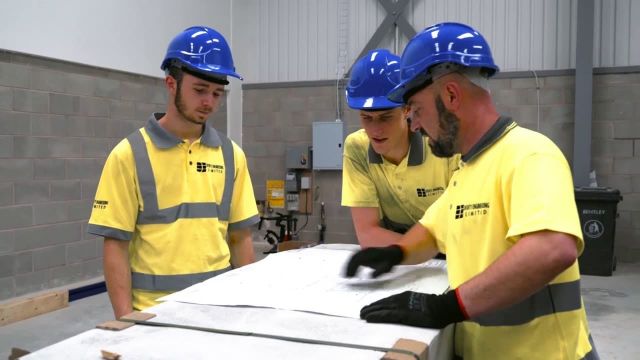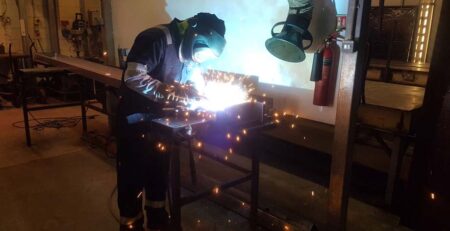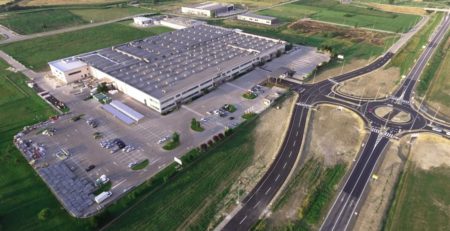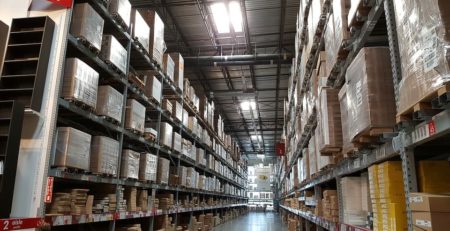A Guide to Warehouse Safety
Vehicles, machinery, packages, and the workflow of a warehouse can all present unique hazards to the safety of your employees, which is why it is essential to ensure the proper safety procedures for your working environment. The Health and Safety at Work Act 1974 states that all people have the right to be protected from work-related risks – wherever reasonably possible – and it is the legal responsibility of employers to adhere to these regulations.
Here at Doity Engineering Ltd, we work with the installation of mezzanine floor systems, often in warehouse environments. As suppliers, it is also our responsibility to adhere to safety guidelines, so we have put together a guide to help you learn more about this.
Objects
A warehouse working environment is, perhaps, most commonly used for the storage and organisation of goods. This presents the potential hazard of objects falling and leading to the injury of employees, so it’s imperative to prevent this eventuality.
The key to just about every safety measure is prevention; it’s best to prevent an accident from happening altogether. To help prevent falling objects from causing injury, consider the layout and the workflow of your space. Indicate any areas that may be more susceptible to falling objects – including areas with tight corners, doors, pillars, and uneven surfaces (which should all be avoided if possible) – and ensure these areas are marked out and only accessible to authorised personnel. Further preventative methods, such as stretch-wrapping pallets for stability, should be explored in order to optimise safety.
Inspection is another method for catching an issue before it has a chance to cause harm, so examine all racking and pallets frequently. This includes the consistent, visual inspection of racking and regular expert checks should also be carried out.
The reporting of any issues that are identified is then paramount, which can be aided by the proper implementation of communication systems and a dedicated reporting process that is both efficient and easy to carry out.
Vehicles
It is estimated that moving vehicles account for up to 25% of workplace accidents that happen in warehouses, so implementing the proper safety procedures in this area is key.
Consider variables such as the type of vehicle, how to minimise reversing and sharp turns, the frequent maintenance of vehicles, and how speed might change in the area. By implementing a one-way system, as well as dedicated ‘traffic routes’ in your warehouse, you can look to reducing the risk involved with moving vehicles. Where this is not possible, consider using vehicles with reversing sensors and/or cameras.
Visiting or delivery drivers should be made abundantly aware of the safety processes of your warehouses before they enter. They should be handed the standardised list of practices adhered to by your in-house drivers.
Height
Falling from height is a great risk in a commercial environment, and should be consequently avoided wherever possible. If this is not possible, proper planning and supervision is key to ensuring the reduction of the risks involved.
Common causes of injury when working at height in a warehouse come from ladders. Consider using an alternative method of accessing the higher areas of your warehouse and make sure all equipment used is frequently inspected, and subsequently maintained accordingly.
Manual Handling
The manual handling of packages and goods in a warehouse can lead to the risk of immediate or cumulative injuries. Proper training and an extensive risk assessment is vital for reducing the risks involved in the manual handling of products.
The main aspects to consider are the task at hand, the weight of the load itself, the working environment, and the capability of the individual. By assessing these risks, you are able to put together a guide of best practices for ensuring the safety of your employees.
Slips
When the floor of a warehouse is contaminated – usually with water, or another liquid, but sometimes it can even be pieces of plastic packaging – it can be dangerous for employees. This can be especially dangerous if the products are oil-based.
Once again, the best method to ensuring the health and safety of your employees is to prevent the accident from happening in the first place. This can include the cleaning of surfaces, stacking storage packages properly, and other ad hoc activities to ensure an ideal working environment. You might also want to consider installing slip-resistant flooring (which can be as simple as adding a layer to the top of an existing floor) or providing non-slip shoes for your employees.
Should a spillage or other hazard be spotted, it should be dealt with effectively and immediately and there should be a standardised contingency plan for resolving these issues to prevent injury.
Trips
Another hazard that falls hand in hand with working in warehouses is the potential for tripping. With, oftentimes, hundreds and thousands of products lining the shelves, it’s important to ensure these are aligned and organised.
Managing workflow of your employees is important in reducing the risk of tripping because the pathways that connect the different areas of your warehouse should be kept clear at all times. Wider than this, all of the walkways should be inspected and monitored, being sure to be cleared up if any debris is found.
Proper Prevention Prevents Poor Performance
For the most part, ensuring a safe warehouse is generally about taking the most applicable to prevent an incident from occurring in the first place. Keeping all aspects of your warehouse in order is a great place to start with this, and making sure all employees (and visitors) are on the page is essential. Setting the proper processes in place will help to keep you and your employees safe and can help to provide a more efficient workplace overall.
Doity Engineering Ltd
Doity Engineering Ltd provide the Revlok mezzanine with a wealth of experience in the installation of storage platforms for warehouse applications. If you’d like to hear more about what we can do for you, please reach out to us by calling 01706 646971 or filling out our simple contact form.

REQUEST A NO-OBLIGATION SITE SURVEY
If you’re considering a mezzanine floor for your premises, get in touch with the team here at Doity Engineering. Our team are more than happy to discuss our products and solutions with you.













Leave a Reply